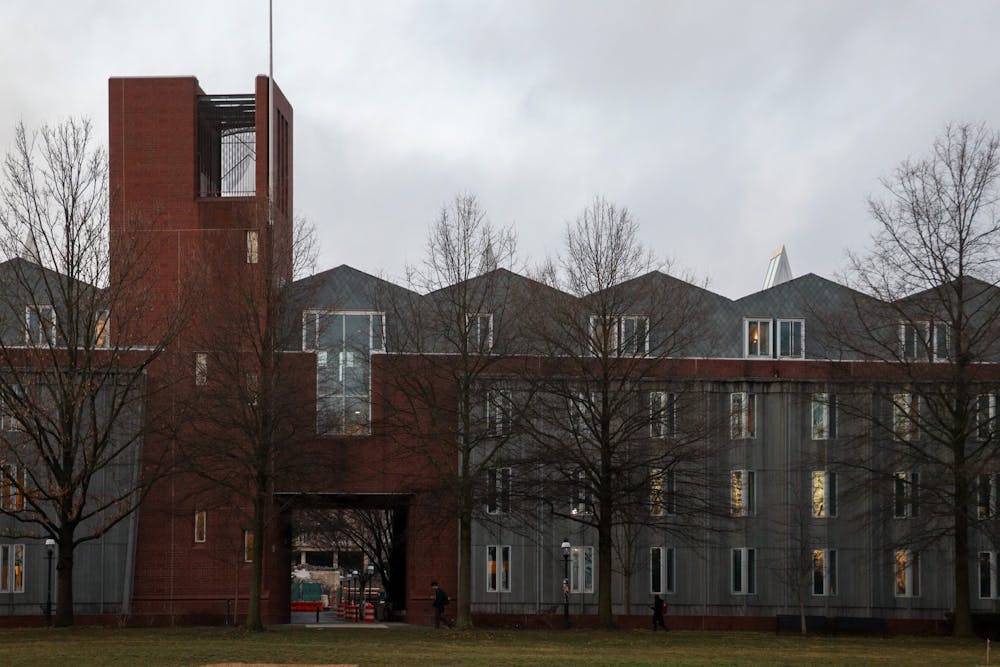With 1,915 registered rising seniors and juniors and 902 available rooms, the upperclass room draw is by far the largest of the ten room draws that Princeton students participate in when selecting housing. Taking place from Friday, March 31 to Friday, April 7, the upperclass room draw saw rising juniors and seniors draw into 761 rooms that now house a total of 1,309 students. The remaining rooms will be used to place students on the waitlist in rooms over the summer.
The Daily Princetonian analyzed the upperclass room draw by periodically downloading the Available Rooms List provided by the Department of Housing and Residential Life. The ‘Prince’ downloaded 23 available rooms lists to analyze trends in how different types of rooms were drawn and in what residential halls. The trends show that students have a strong preference for smaller rooms.
Singles were by far the most popular room size in the upperclass draw. By the time rising juniors began drawing on April 5, nearly three-quarters of singles had already been drawn. There was virtually no difference in popularity between quads and triples as rising seniors drew.
“I anticipated about a 50-50 chance of getting a single, maybe slightly less,” said Max Hines ‘25. “I was on page 35 of 41, but was hopeful since upperclass housing has a lot of singles. I was surprised to see them go as early as they did, almost a full day before my draw time.”
By 11:20 a.m. on April 6, singles had run out. The ‘Prince’ verified that the last single drawn was Pyne 230, the smallest dorm room on campus at just 82 square feet. All other room sizes were available until the end of upperclass draw.
When asked about how the University plans to accommodate the high demand for singles, which outpaces supply, University spokesperson Ahmad Rizvi said that “the administration of the Room Draw policies helps to ensure that the process for students to select from a limited number of various room types is fair and equitable.”

Students tended to draw the largest rooms available at their draw time. The ‘Prince’ averaged the square feet of the remaining rooms of each type for each available rooms list saved.
At the start of the upperclass draw, the average quad size was 591 square feet, the average triple 442 square feet, and the average double 329 square feet. At the end of room draw, the average size of the remaining quads was 517 square feet, triples was 410 square feet, and doubles just 186 square feet. Those who drew for doubles at the end of room draw had access to rooms just 56 percent of the size on average of doubles available the beginning of the upperclass draw.

For singles, the average room size was 161 square feet at the beginning of draw. The last rooms list the ‘Prince’ found where singles were available was 10:25 a.m. on April 6, with only one single – Pyne 230 – being available. In the last batch where multiple singles were available, the average size was 97 square feet–nearly 40 percent smaller than the singles available at the beginning of the upperclass draw.
Only Dod Hall, Scully Hall, and Wright Hall had all of their rooms drawn in the upperclass room draw. They were followed by Patton Hall, Pyne Hall, 1903 Hall, and Walker Hall, which all saw over 90 percent of their rooms drawn. Laughlin Hall, Cuyler Hall, and Brown Hall were the least popular halls, with each having fewer than 80 percent of their rooms drawn.
The ‘Prince’ then analyzed the pace at which rooms drew across the University’s residential halls and campus areas. For this analysis, the ‘Prince’ categorized campus into three areas: “West Campus,” which consists of 1901, Foulke, Henry, Lockhart, Laughlin, and Pyne Halls; the “Elm Drive Area,” which consists of 1903, Brown, Cuyler, Dod, Feinberg, Little, Patton, Walker, and Wright Halls; and Scully Hall, as its own separate category.
Buildings in West Campus are far from many academic buildings and are often considered less desirable by many students.
The Elm Drive Area had slightly more rooms available to draw into than West Campus at the beginning of the upperclass room draw. The pace at which rooms were drawn between these two areas was roughly the same, with the Elm Drive Area consistently having slightly more available rooms than West Campus throughout the entire draw. Scully, however, consisting mostly of singles and doubles, drew at a faster rate, running out of rooms by 11:20 a.m. on April 6. Scully Hall is air-conditioned.
Across the 1,309 rising upperclassmen that drew in the upperclass room draw, approximately one-third will live in singles and slightly less than a quarter in doubles. About 20 percent will live in triples or quads, with smaller amounts in quints or six-person suites.
Princeton students showed a clear preference for drawing into smaller room types during the room draw process. When asked whether future housing, such as Hobson College, will take into account this preference in determining the quantities of each room, Rizvi stated that “Hobson College’s room type mix and amenities have been designed to support the four-year residential college program including room types that are suitable for building community for first-year advisee groups and strengthening community for sophomores, juniors and seniors.”
Rizvi also confirmed that the University has no plans to build additional housing dedicated to upperclass students in the future, instead favoring strengthening the presence of upperclass students in the residential colleges.
“This year’s draw saw continued strong interest by juniors and seniors to live in the residential colleges as all available junior/senior residential college beds were selected.”
Students who did not participate in room draw may fill out a waitlist application by May 1 to seek housing for the coming year.
Ryan Konarska is a News contributor and an assistant Data editor for the ‘Prince.’
Please send any corrections to corrections[at]dailyprincetonian.com.








